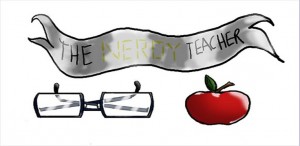Article written by Education Industry news, public, private and adult online education blog
As the 2012-2013 school year winds down, I thought it appropriate to (as is this month’s focus) take some time to reflect on the work done and celebrate the accomplishments of our teachers and students. The decisions I have made over the years to the leave the classroom at different points of my career has always been tough. I have always believed that a teacher has the most impact on a student and therefore is the most important resource a district has at its disposal. Why leave a position that is so important and so valuable and so impactful?

“When I founded PLN in 1982, a key aspect of my philosophical stance, built into its fabric, focused on validating and honoring teachers. I believe that the most precious resources we have in education is teacher energy. Our students and our society are the losers when teachers lose energy as they have from overly top down and scripted curricula and from reform efforts that fail to include their intellects, their wisdom, and their histories.” –Dr. Morton Botel, Founder and Senior Advisor of the Penn Literacy Network.
Especially in today’s educational environment, I truly believe that Dr. Botel’s democratic, co-constructivist outlook on staff development (and at a lot of levels how teachers can and need to be led by their districts) is an incredibly strong foundation for helping teachers continue to do the incredibly important, incredibly powerful work they do. After spending seven or so years collaborating, facilitating, learning and growing within this framework, I have come to understand that as a staff developer or an assistant principal or a curriculum supervisor, I can actually have a pretty strong impact on students…just not as directly as when I had my own classroom.
With this basis in mind, let’s look back over this year at the Wissahickon School District. It’s hard not to see that are roughly four major forces driving educational change today: the push for student centered, authentic learning experiences, the integration of the common core standards, the incorporation of choice and passion driven learning for “20%” of the time, and the globalization of learning by using technology to flatten classroom walls. At Wissahickon, we are lucky in the fact that we have 6 full time staff developers/instructional coaches in our buildings (2 elementary, 4 middle/high school). Our responsibility includes working with administration and the teachers on everything from curriculum and assessment, to lesson design and instructional best practices, to the integration of data and technology into the classroom, and to helping teachers develop innovative teaching and learning experiences for their students. So what did we do with our teachers and students this year…
Curriculum: In preparing for the Common Core standards, our ELA teachers underwent a full K-12 curriculum review and overhaul. At the elementary level, the teachers made a move towards a comprehensive, consistent program that provides a balanced literacy approach and the direct instructional support needed to teach to the rigor, intent, and depth of the new Common Core Standards. At the middle and high school levels, there were some major shifts as well. While the 6-12 curriculum had previously (roughly 7 years ago) moved from the traditional structure—9th Grade Western, 10th Global, 11th/12th British/American lit—to a thematic, core novel based approach that was built around the elements of the Understanding by Design curriculum framework, there were some gaps when it came to student choice and innovation. The ‘new look’ curriculum is keeping the Big Idea/Essential Question and core novel structures, but is now grounded in the skills set forth by the Common Core Standards, has a nice balance of contemporary and classic fiction, as well as literary and information texts across cultures (students are reading everything from Achebe’s Things Fall Apart to Fitzgerald’s The Great Gatsby to Gladwell’s Outliers to Lahiri’s Interpreter of Maladies to Ehrenreich’s Nickled and Dimed to Hosseini’s The Kite Runner to Shelley’s Frankenstein), is aligning nicely with Social Studies in certain grades (pairing the student’s study of WWI with Wiesel’s Night and Vonnegut’s Slaughterhouse Five), and has formally structured in a marking period that includes the students’ learning and practicing research skills while completing the passion driven Genius Hour project, and ‘rediscovering’ their love for reading through a Reading Workshop based off of Atwell’s Reading Zone. Throughout their academic careers, students will be moving through courses built around concepts such as How Our Communities Shape Us, Short Stories, Drama and Myth, Struggles for Freedom and the American Dream, and Developing (and eventually Applying then Living) the Language of Academic Discourse: Reading Like a Writer and Writing Like a Reader.
Community Partnerships: Our elementary, middle and high school Science students have been involved, through a series of grants from Dow Chemical, Johnson & Johnson (Bridges to Employment) and PECO and the Franklin Institute (National Education Energy Development & PECO Energizing Education Program) in a variety of problem based learning projects. Students have been exploring the ecology of a wooded lot on school grounds to develop a proposal for optimal land use policies, participating in authentic field research by using laptops to gather real time data on the physical, chemical and biological parameters of water quality of our local watershed, exploring the nature of energy and energy transformations, renewable and non-renewable energy resources and conducting energy audits and developing plans for conserving energy use to help while debating how to meet our future energy needs, and exploring career paths within the Health Care Field through laboratories, tours, mentoring and interacting with health care professionals.
Flipped Classrooms: Some of our math and science teachers have embraced the concept of the flipped classroom this year. After an initial go around with the videos from Kahn Academy, our teachers, in response to student request, used laptops and our district’s Learning Management System to record and host their own videos for their students to watch at home. A few of us were able to visit some classrooms the days that teachers were ‘flipping’, and the results were fantastic. With all the major ‘content’ addressed the day or two before through the videos, in class time was spent with students differentiated into three groups, a reinforcement or re-teaching group, a middle of the road/extra practice group, and an enrichment group in which students were applying many of the concepts to real world problems. As the students worked at each of their current levels of understanding, some on basic problems or concepts and most on laptops, the teacher and co-teacher spent their time moving from group to group and student to student facilitating learning at each student’s level. As the class continued and certain students began to master the concepts from the lesson, they were able to move ‘up’ groups so they could challenge themselves with more of the application of the concepts to real world problems. As a culminating project, the students ended up creating their own ‘flipped video’ lessons on different topics covered in the final exams. This ended up being a great collaborative piece in which groups across classes were able to share their work and give each other great opportunities for success.
Globalization: Students in our Social Studies and English classes took part in a number of global education projects. The three big ones that stick out are Project Global Inform, the Flat Classroom Project, and Net Gen Ed. Throughout Project Global Inform, students spent time using social media to shed the role of bystander and take on the role of rescuer while addressing numerous human rights violations around the world. The Flat Classroom Project connected our students with students from Qatar, Australia, Romania and Europe to learn about how our world became ‘flat’, outsourcing, and other concepts highlighted in Friedman’s The World is Flat. The Net Gen Ed project is a global collaboration project that challenges students to envision the future of education and social action by inspiriting them to study leading technology trends and create their visions for the future. Using the Ning Social Network platform and a wiki, they collaborated with students from various countries in Europe as well as Australia to complete this project.
1 to 1 Initiative: In 6th and 9th grade, our district has started its 1 to 1 initiative in which every student in that grade is given a laptop to take home for the year. The rest of the grades do share lap top carts and we do have a ‘Bring Your Own Device’ policy, but the real push for technology integration across ALL classrooms has taken place in these two grades this year. This has led to more user generated, student driven learning. Outside of just consuming, the 1 to 1 push has allowed students to now create their own learning experiences through application of their knowledge and skills. Students have been engaged in numerous, web based projects and activities such as the teachers sharing resources digitally, students using digital portfolios to track and reflect on their work, the use of Shelfari 6-12 for students to develop a ‘literacy/reading’ portfolio that will help them track their independent and reading workshop books throughout their careers, students creating collaborative digital stories and Stop Motion/Claymation videos, and teachers and students working together on the collection and analysis of mathematic and scientific data (some of which was in support of the community based projects mentioned above).
Along with the ongoing use of different technologies and the overall push towards using student data to drive instruction, these are just some of the highlights from this year that are proactively addressing the ‘forces’ (globalization, standards, student centered/authentic learning experiences, choice) driving education right now.
Special thanks to Tara Strouse, Colleen Meulstee, Dianne Krause, Anne McDonough and A.J. Juliani for all the work they have done with the teachers this year (also for continuing to push me to constantly grow). And, of course, special thanks to all the teachers and student who allowed us to come in and collaborate with, push, and initiate instructional and pedagogical change for the benefit of students.







